…And the shark, it has teeth, And it wears them in the face… Tornado GR.1 “MiG Eater”
"Operation Granby" represented the British contribution to the military response to the Iraqi invasion of Kuwait in August 1990, carried out by an international alliance and under the title of UN Resolution 678. Better known are the American names Desert Shield and Desert Storm. The former refers to the phase of the conflict that lasted until mid-January 1991, during which attempts were made to reach an agreement by diplomatic means. From 17 January onwards, this phase led to the massive military operations of Desert Storm. The Iraqi armed forces, which had been highly armed for years, including by the West, and which were both marked and equipped with combat experience from the eight-year struggle of the First Gulf War that ended in 1988, were defeated surprisingly quickly. On 12 April 1991, after Iraq's complete military defeat, a ceasefire agreed between the forces of the international coalition and the Iraqi leadership came into effect; as a precondition, Iraq had already declared the annexation of Kuwait to be over on 5 March.
This conflict, referred to as the "second Gulf War", was not only the first significant test run for the US armed forces after the end of the Vietnam War - not only of newly developed weapons systems, but also of newly formulated operational doctrines. Thus, one insight that had been clearly learned in Far East Asia was the importance of media warfare. Now they wanted to do it better: the concept of "embedded journalists" was born: well instructed and carefully selected reporters were allowed to report directly and with selected content from the front line. Censored images and professionally edited film footage told the appropriate stories to the public. However, the public memory of this war, which is still present today, also includes some veritable PR disasters, caused by the making of all too quickly refutable claims and all too clumsy attempts at deception.
Tornado GR.1 in the 2nd Gulf War
An echo of the increased awareness of having to sell the war to one's own public in tolerable images and, above all, embedded in positive frame narratives, is also offered by the Tornado GR.1 shown here with the registration ZA 477.
In the style of the nose art of Allied aircraft of World War II, an impressive shark's mouth and an illustration of the name "MiG Eater" are painted on the left side of the nose. Other selected aircraft of the Tornado units deployed to the war zone were also given corresponding, insinuating graphics, which, together with the martial-saloppy naming of these aircraft, were probably intended to evoke the rough heroic charm of bygone days. Personally, I think it is quite possible that these nose-art images were coordinated by a single graphics studio: the uniform formal design and the consistent macho wit of these works of art seem to me to indicate this.
The British GR.1 and GR.1a Tornados were organised into three squadrons that flew their missions from the Saudi bases at Tabuk and Dhahran and from Muharraq in Bahrain. Squadrons 2, 15, 16 and 20 were from RAF Laarbruch, Squadrons 14, 17 and 31 had deployed to Iraq from RAF Bruggen, while the 17th, as well as the famous "dambuster" of the 617th Squadron, were from RAF Marham in England. The 13th Squadron from RAF Honington also contributed its Tornado GR.1a.
Eight British Tornados were lost in action, five crew members died and three others were killed in accidents. A total of 2500 missions were flown by British Tornados in this conflict.
The name "MiG Eater" refers to an aerial victory achieved in a most unusual way by ZA 477, a Tornado flown by crew Sqn Ldr Pete Batson and Wg Cdr Mike Heath of 15th Squadron.
During an attack on the night of 17-18 January against the Iraqi airbase Al Asad, the pair led a formation of eight Tornados from their base at Tabuk into the target area. All aircraft were loaded with the cluster bomb canister JP233 to destroy the taxiways and runways of the enemy base. The ammunition containers were equipped with a mixture of cluster bombs and mines, the ammunition was shot out downwards with propellants on overflight, stabilised the flight path by means of small parachutes and blew craters in the concrete or asphalt surface, thus making it impossible to use them as a take-off or landing runway.
Attack missions like this were characteristic of the first phase of British air war planning. In phase one, the threat from the unpredictable Iraqi air force was to be eliminated as quickly as possible: high-risk, low-level attacks on enemy bases were to cripple the Iraqi air force permanently and quickly. In phase two, medium-altitude bombing raids were carried out against tactical and strategic targets. Only in phase three were precision strikes with guided drop munitions then planned against selected point targets such as bridges or individual aircraft bunkers.
Sqn Ldr Pete Batson describes in a mission report how the formation switched to low-level flight and picked up speed after crossing the Iraqi border. The closer they got to the target, the more they accelerated and the lower the aircraft were pushed to the ground; a task that required flight controls to be linked to Terrain Following Radar (TFR). It was only a few seconds before the target that they switched to manual control. Bateson goes on to report that he could see Al Sadat's facilities about a minute before the flyover-at that point the site was still illuminated. What he could also make out were the position lights of an aircraft on approach. Thirty seconds before the target, Iraqi air defences began to go active, suddenly the Tornadoes thundering overhead were bathed in the colours of detonating AA shells and the air was filled with the thunder of explosive munitions and tracer scars. Despite this ominous and confusing scenario, Bateson, on his approach to the selected runway, recognised an plane taxiing out of the runway - the same he had recognised seconds before on approach. A small course correction -and their Tornado was right above the taxiing aircraft at the moment the cluster munitions were fired downwards from the container.
The attack was limited to a single overflight; flying low over established corridors, the Saudi border was reached. Fortunately for 15 Squadron, all Tornados had survived the mission, and the attack itself was considered a complete success. In retrospect it became clear that Bateson's and Heath's victim was not a MiG, but a Mirage F.1; the name "MiG Eater" was already taken at that time - and simply too good to make room for the truth.
Kit and building process
I can preface the short overview of the building process with the following remark: I will definitely not build this kit again!
To illustrate this perhaps harsh-seeming judgement, I would like to address the following points:
-
the kit is annoyingly complicated in construction in many areas. A dubious mechanism, which is supposed to make the pivoting wing mechanism work, fails at the latest when installing the plastic parts to represent the two rubber lips on the fuselage, which seal the rear edges of the attached wings: here you have to decide for a closed or an open version - which leads the whole dubious spectacle before ad absurdum.
-
The division of the components follows a logic in some areas that I simply did not want to understand. The most annoying example is the multi-part construction of the air intakes. This is such that a sharp-edged representation of the leading edges becomes almost impossible. It took me hours to prepare the whole thing so that it could pass as the air intake of a Tornado.
-
The accuracy of fit is generally disappointing, but in some areas it gets really cruel. The entire tail area should serve as an example; in particular, the representation of the retracted air brakes can only be achieved with great effort. For this, too, I spent hours filling, sanding and engraving.
-
Details are missing in some crucial places, especially the well visible landing gear bays suffer from extensive emptiness. Strange is also the lack of a bulkhead, which would close the position of the pilot's seat to the rear. The situation on the original is quite complex - but to not even try to reproduce it, but to simply omit the whole thing, is almost provocative.
An Eduard Inferior set was used for the cockpit and the pitot tube/measuring probe on the nose was replaced by a metal one. The decals for "MiG Eater" are from PrintScale.
Conclusion
Even if the description of the building process might suggest otherwise: in retrospect, building the two Tornados was quite fun, challenged (thus furthered) my modelling skills a bit and left me with the conviction that I will have to build more models of this impressive machine. Well, fortunately other manufacturers have also taken up the cause of the impressive Panavia Tornado!
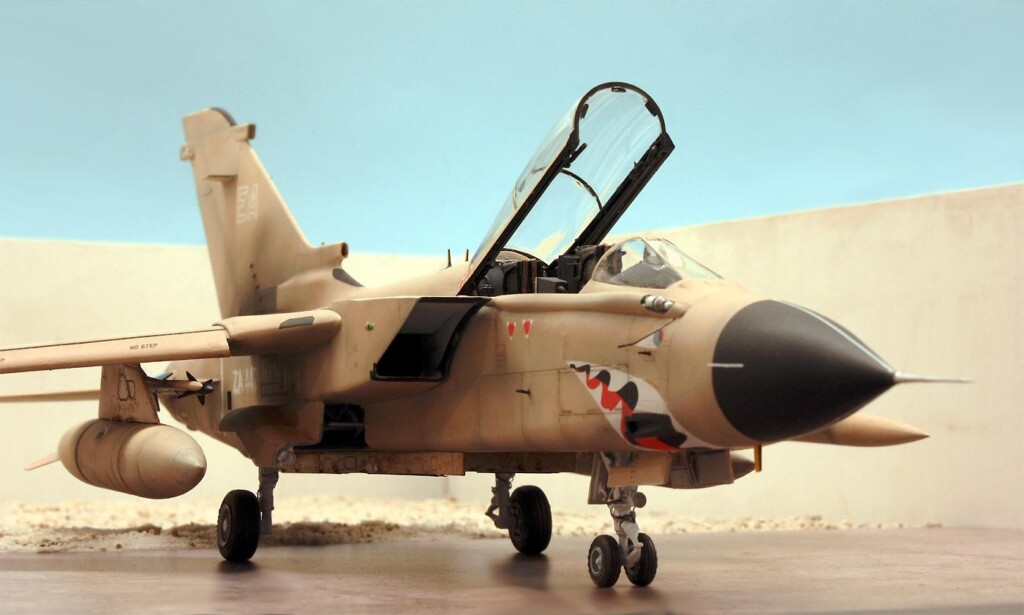


































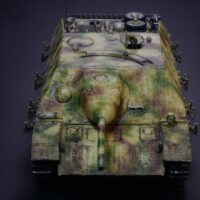
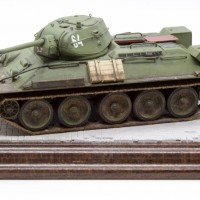
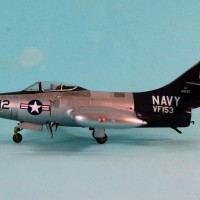
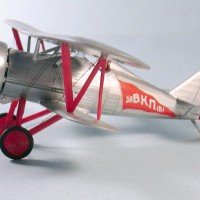
Good looking Tornado! I'm really partial to this aircraft - not sure if it's that big tail or what, but it always catches my attention. Need to build a few more. And the Granby scheme look great on this - excellent job with it!
Thanks Greg, I'm glad you like the "Granby" Tornado!
Hi:
Great history and build, but you neglected to mention the manufacturer. Revell, Italeri? It looks like the Italeri kit with the bottom plate for the forward fuselage, but not everyone would know this if they haven't built one.
It doesn’t look like the Italeri kit, which I’ve built (it’s somewhere here in iModeler) because the wing root looks “right”. In the Italeri you have to choose between a huge gap between wing and fuselage, or building something with putty to fill the gap…
Hello Stephen, Marcello is absolutely right - it is the Revell kit 03987 "Panavia Tornado IDS".
The second Tornado under construction is an F.3 from the Eduard boxing, but it shows the same weaknesses.
Thank you for your interest and motivating words!
Excellent build and equally excellent article, Roland!
Thank you my friend! 🙂
A beautiful Tornado, Roland @rosachsenhofer
It does look great in desert scheme.
Thanks for sharing the background information.
John, thank you for the reaction and your words!
Beautifully built! Lots of extra attention to detail and finish. 10 out of 10
Highly motivating! Thank you!
Nice work, Roland!
Thank you John!
Nice one! Used to get them over us (SW Scotland). When I was a kid it was Vulcans. 617 Squadron apparently. Never get low flying here any more. Occasional Hawk.
Must have been impressive- thank you Ross!
Hi Roland, an excellent posting by you as always, even if your view of the conflict is slightly subjective. Nonetheless an impressive model, thanks, as always, for sharing your build experiences.
Thank you for your comment! I am well aware of the subjectivity of my words, which makes me all the more pleased with yours.
Great looking Tornado. Whatever problems there were with the kit, you have circumvented successfully!
Marcello, that makes me happy - thank you!
You overcame those hurdles Roland! And, with most impressive results too. 👍 I've always admired the Tornado's lines and would love having one in my display! Great job on both @rosachsenhofer! 🍺
Your words make me very happy - thank you for this motivational boost! 🙂
A great looking Tornado!
Thank you Robert!